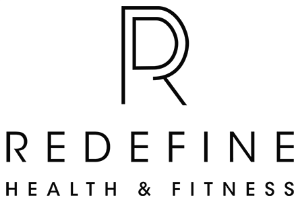FUNCTIONAL STRENGTHENING AFTER STRETCHING TO CARRYOVER MUSCLE LENGTH
Have you ever been to a great yoga session and left feeling flexible and well stretched out, only to wake up the next morning feeling the same muscle tightness as before? Or maybe you have experienced going to a massage therapy session or a chiropractic session and left feeling aligned and relaxed, then woke up the next morning feeling back to stiff and sore? These are common reports heard amongst clientele striving to improve their flexibility, muscle length, and biomechanics through passive treatment options.
Before we continue on, I want to mention that I am not trying to discount the benefits of the above treatment options. There are many benefits to the above passive therapies. However, if your objective is to improve muscle length, then read on.
A main reason why flexibility and muscle length doesn’t carryover after stretching, massage, and adjustments is because after a passive intervention you must follow up with active exercise. The best way I can think to convey this message is to provide an example case. Let’s describe a middle aged male who sits at a desk for work. He begins to notice that he is getting back pain because his hip flexors and adductors are tightening from prolonged sitting. He begins a gentle stretching program to help improve his flexibility, and after a few weeks becomes frustrated that he isn’t feeling much progress. He seeks various passive interventions from health care practitioners, feeling better for a few days but then mid week notices that the tightness comes back. Why is this happening?
Our described desk worker is working hard to improve his flexibility to relieve the painful tension on his lumbar spine. He’s doing almost everything right by seeking help, but he’s missing a key component. This would be functional strengthening . When the hip flexors and adductors tighten, the reciprocal muscles (gluteus Maximus and medius, transverse abdominus “TA” ) never exercise through their full potential range of motion. For years, they have been functioning in the reduced range of motion given by the lack of flexibility at their reciprocal muscle group. Thus, when our office worker stretches or has a healthcare practitioner provide manual treatment, the gluteus medius and Maximus lack the strength and motor control to engage in the newly achieved range of motion. As a few days go by and the new muscle length isn’t functionally utilized, over time the muscles will resolve back at their prior length and our desk worker goes back to feeling tight and sore. What can be done to correct this?
If you are looking to improve muscle length, it is important to balance functional strengthening of the reciprocal muscle you are stretching. For the very common case described above, after the desk worker self stretches or receives a passive muscle lengthening intervention, he should be following up with active range of motion to functionally carryover the newly achieved muscle length. The active range of motion should be dynamic and ideally simulating a movement pattern he commonly engages in. He should also be following up with functional strengthening, ideally in an activity simulating his desired recreational activity or hobby. The strengthening exercises should focus on engaging the target muscle, and should be modified if any compensatory patterns arise or the person feels engagement in a different muscle group. It takes 6-8 weeks to make noticeable strength gains. With diligence and hard work, long lasting change can be created. The above case is an example of one body region, the same methodology should be applied to all muscle groups.
I was drawn to yoga because it is one of the few recreational activities that if sequenced well can encompass this blend of stretching and functional strengthening afterwards. After self stretching or passive stretching interventions by a healthcare provider, a person can also seek the consultation of a qualified wellness professional or physical therapist to learn how to properly strengthen the target muscle groups after stretching sessions.
- Carla Pryor is a co owner of Redefine Health and Fitness, a comprehensive wellness company serving North County San Diego. She has a Doctorate in Physical Therapy from the University of Southern California, and is also a board certified orthopedic specialist, certified strength and conditioning specialist, and registered yoga teacher. Please visit www.redefinehealthandfitness.com for inquiries about how Redefine Health and Fitness can help you achieve your fitness goals or to view Carla’s public yoga class schedule.
